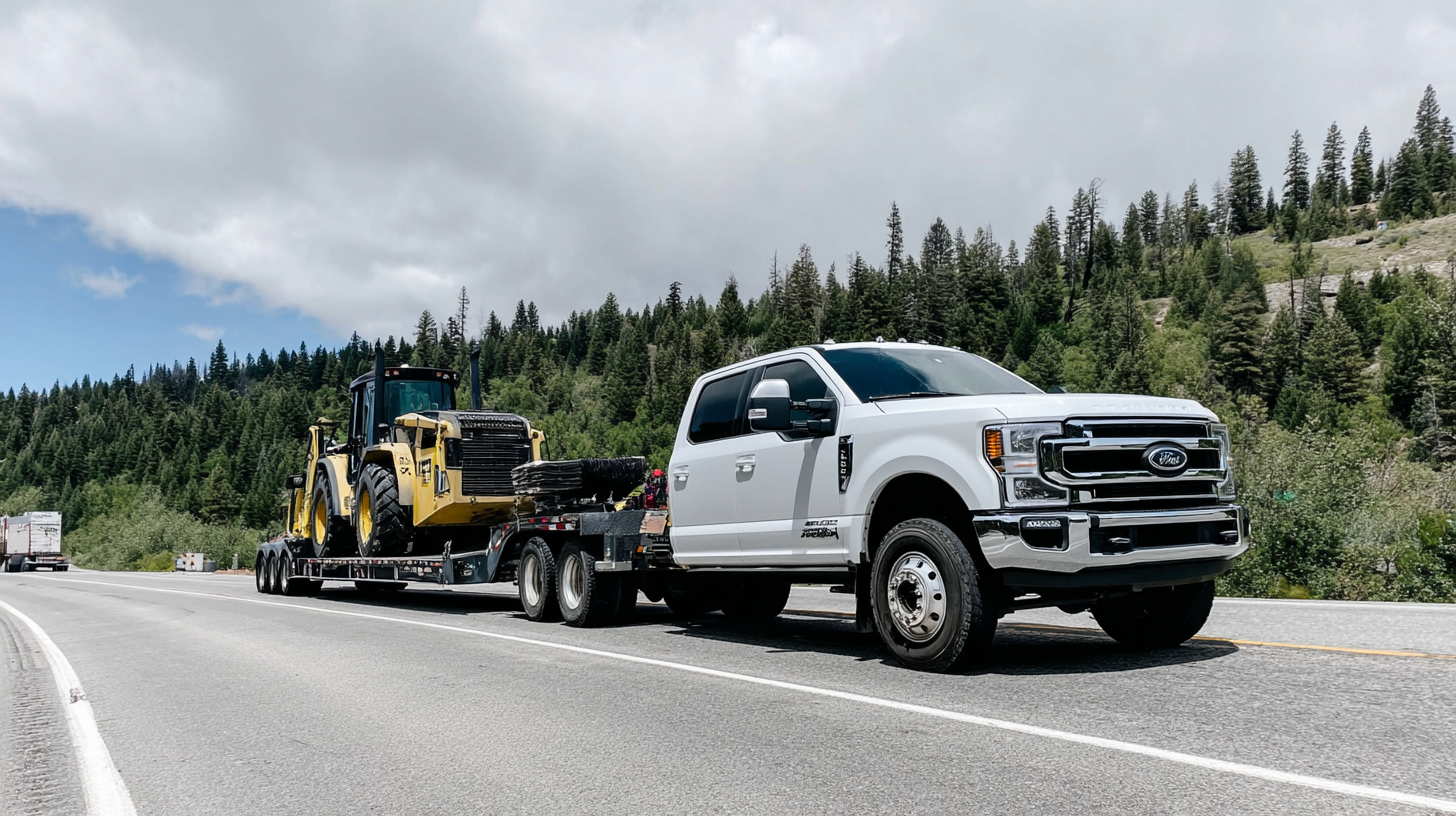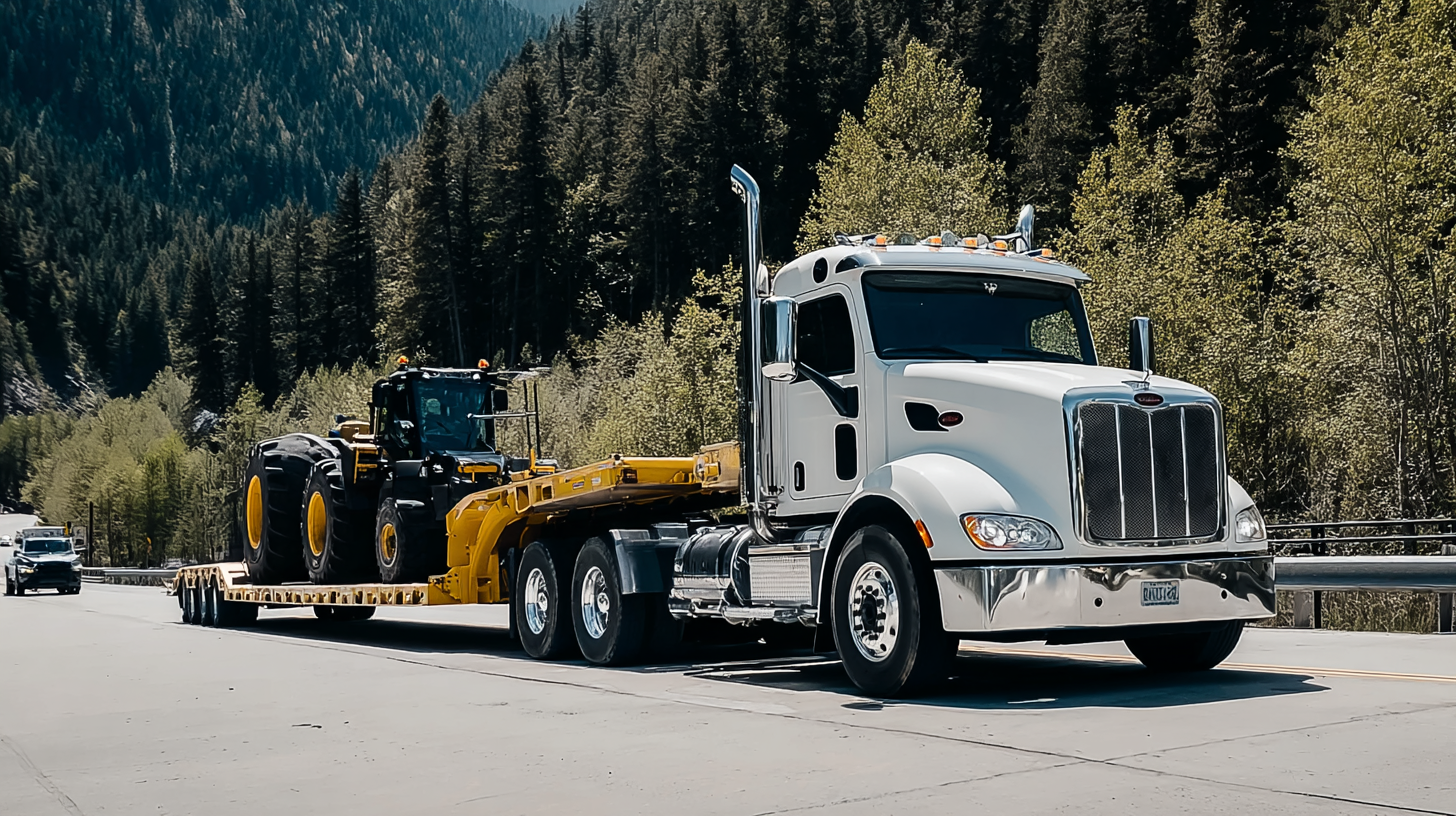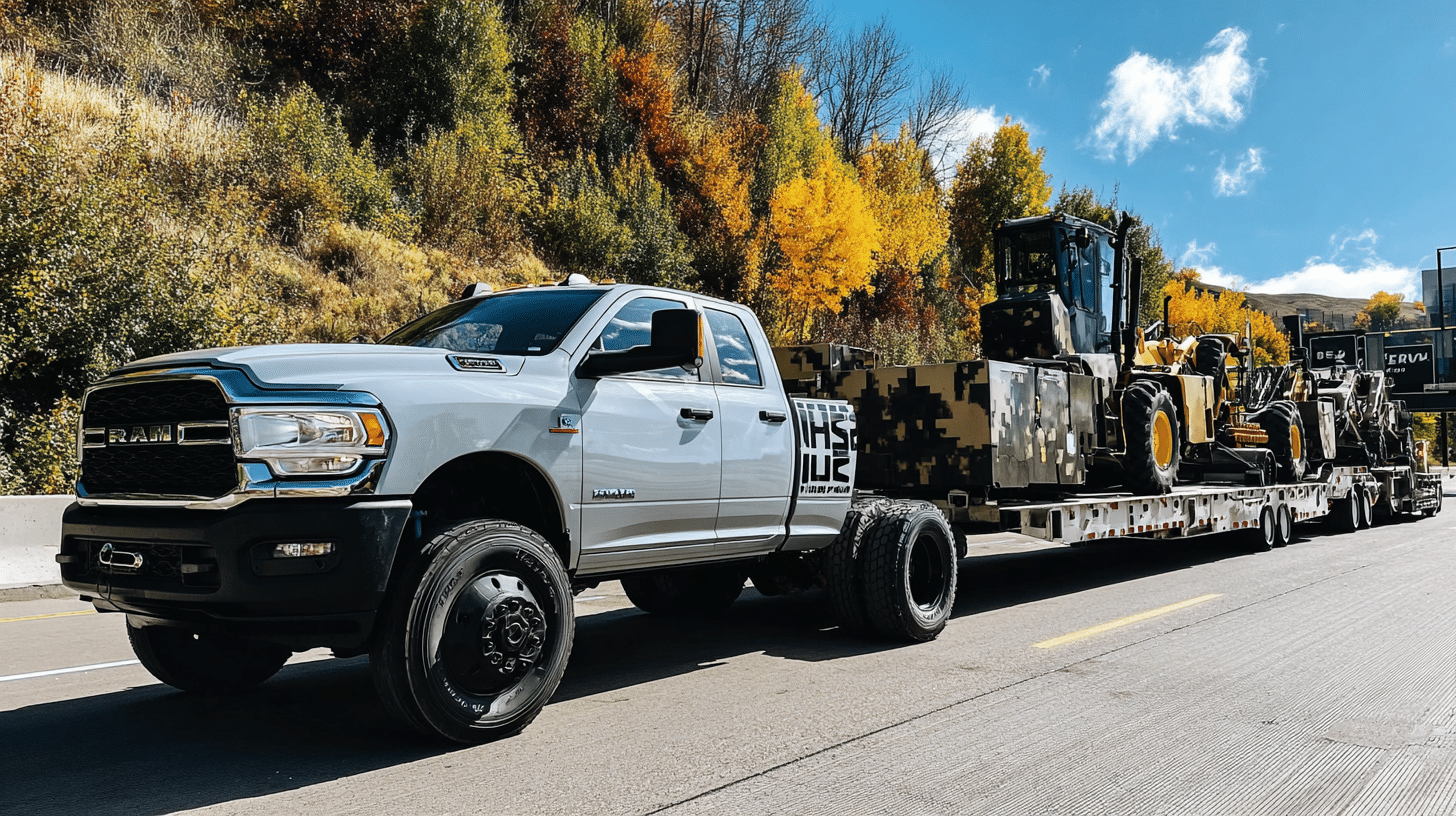Have you ever driven past a pickup truck hauling a trailer and wondered what it was carrying? Chances are, it was running hotshot loads for pickup trucks.
Hotshot trucking is all about speed, flexibility, and moving freight that can’t wait.
In this guide, I’ll walk you through what hotshot trucking really means, why pickup trucks are perfect for the job, and the steps you need to get started.
You’ll also learn where to find loads, which trucks work best, and practical tips to stay profitable.
No matter if you’re curious about the industry or ready to put your pickup to work, this blog will give you the roadmap. Let’s get started and see how you can turn a hotshot pickup truck into your own business opportunity.
What are HotShot Loads for Pickup Trucks?

Ever seen a pickup truck hauling a trailer down the highway and wondered what’s inside? Chances are, that driver might be carrying hotshot loads for pickup trucks.
This type of trucking is growing fast because it’s quick, flexible, and perfect for smaller jobs.
Hotshot trucking is all about moving freight that needs to arrive quickly and efficiently. Instead of waiting for a semi-truck, shippers hire drivers with pickup trucks and trailers to deliver smaller, time-sensitive loads.
The main difference between hotshot and traditional trucking is the size and speed.
Traditional trucking utilizes large trucks, commonly referred to as big rigs, to transport full trailers over long distances. Hotshot trucking specializes in smaller, urgent loads, typically within local or regional areas.
Why Pickup Trucks are Used for Hot Shot Loads
Pickup trucks are the backbone of hotshot trucking. They’re powerful enough to pull trailers, yet small enough to reach places big rigs can’t.
Benefits of using pickup trucks for small and urgent loads:
- Ideal for freight that doesn’t fill a full trailer.
- Faster deliveries thanks to easier maneuvering.
- Lower startup costs compared to semis.
Flexibility and cost savings compared to big rigs:
- Pickup trucks burn less fuel, resulting in lower fuel costs.
- Easier to maintain and repair.
- Can handle both short trips and long hauls when needed.
In short, hotshot loads for pickup trucks open the door to fast, flexible, and profitable work.
They provide drivers with a way to enter the trucking industry without the high costs associated with operating an 18-wheeler, while still meeting the growing demand for expedited deliveries.
How to Get Started with Hot Shot Trucking
Starting with hotshot loads isn’t as complicated as it seems. You need the proper paperwork, equipment, and a clear idea of your costs before you hit the road.
1. Legal and Business Requirements
Before you begin, you’ll need to get your paperwork in order:
- A DOT number is required to operate legally.
- An MC authority lets you haul loads across state lines.
- Insurance protects you and the freight.
- Depending on your state, you may also need a fundamental commercial driver’s license. Always check local rules before starting.
2. Equipment Needed
The proper setup makes the job easier and safer:
- A substantial pickup truck is the foundation.
- Trailers like gooseneck or bumper pull are common choices.
- Safety gear such as straps, chains, and tarps is essential.
- GPS and tracking tools help you stay on time and on route.
3. CDL
A CDL (Commercial Driver’s License) is a specialized license that enables a driver to operate large or heavy commercial vehicles, including semi-trucks, buses, and certain pickup-and-trailer combinations.
Whether you need a CDL depends on the total weight of your truck and trailer. Here’s what to know:
- No CDL required if your truck and trailer’s combined weight (GVWR) is 26,000 lbs or less.
- Class A CDL required if the combined weight is 26,001 lbs or more.
- Many drivers opt for lighter setups to avoid needing a CDL, but a Class A license opens the door to heavier loads and higher-paying jobs.
- Always check your state regulations, as rules can vary slightly.
4. Startup Costs and Expenses
Getting started takes some investment:
- A reliable pickup truck and trailer are your most considerable upfront costs.
- Ongoing expenses include fuel, maintenance, and insurance.
- Don’t forget to account for permits, fees, and emergency repair funds.
- Budgeting ahead of time helps you avoid surprises and stay profitable.
Getting started with hotshot loads for pickup trucks means handling the business side, investing in equipment, and planning your expenses.
Once you’ve got these steps covered, you’ll be ready to find loads and build your hotshot trucking business.
Where to Find Hot Shot Loads for Pickup Trucks
Finding steady work is the key to success in hotshot trucking. Drivers connect with shippers in various ways, but the most popular option is using online platforms known as load boards.
Best Popular Load Boards for Beginners
Load boards are websites or apps that match drivers with available freight. They let you browse loads, compare pay, and choose the ones that fit your schedule.
Some well-known options for beginners include:
- DAT Load Board: one of the largest platforms with plenty of choices.
- Truckstop: trusted by many drivers for its vast network.
- 123Loadboard: easy to use and beginner-friendly.
- uShip: Good for smaller or specialty loads.
- Direct Freight: Simple option for local and regional runs.
Free vs. Paid Options
Free load boards give access to fewer loads, but they’re suitable for testing the waters and getting familiar with how the system works.
Paid load boards typically offer better-paying loads and additional features, such as credit checks, fuel tools, and advanced search filters, which help carriers and brokers find the most profitable matches more quickly.
Other Ways to Find Loads
Load boards are a strong start, but they’re not the only way. Many drivers also secure consistent work by building relationships with dispatch services, which connect them with available loads regularly.
Others join carrier partnerships, where smaller operators lease on with larger carriers to gain access to steady freight, insurance coverage, and support services that make running their business easier.
Finding hotshot loads for pickup trucks is all about knowing where to look. Start with load boards to learn the ropes, then branch out into contracts and broker networks to build a steady flow of freight.
Pros and Cons of Hotshot Trucking
Like any business, hotshot trucking has its ups and downs. Knowing both sides helps you decide if running hotshot loads for pickup trucks is the right fit for you.
| Pros | Cons |
|---|---|
| Lower startup costs compared to buying a semi-truck. | Income can be inconsistent without steady contracts. |
| Flexible schedule – choose loads that fit your time. | Fuel prices and maintenance costs cut into profit. |
| Easier entry into trucking with a pickup truck. | Long hours and tight delivery deadlines can be stressful. |
| High demand for urgent, time-sensitive loads. | Wear and tear on your hotshot pickup truck is higher. |
| Opportunity to grow from one truck into a fleet. | Must handle paperwork, permits, and compliance yourself. |
Hotshot trucking isn’t for everyone, but for motivated drivers, it can be a rewarding way to build income and independence with a pickup truck.
Tips for Success in Hot Shot Trucking
Running hotshot loads for pickup trucks can be profitable if you plan smart. Success comes down to how you price your work, manage your time, and build trust with shippers.
- Set fair rates – Research local prices, factor in fuel, maintenance, and insurance, and avoid underselling.
- Plan routes wisely – minimize empty miles, utilize GPS tools for traffic and fuel stops, and combine loads whenever possible.
- Manage time effectively – Hotshot deliveries are urgent, so efficient planning keeps your truck moving and profitable.
- Build a strong reputation – Deliver on time, communicate openly, follow safety rules, and handle freight with care.
- Focus on growth – Fair pricing, smart planning, and trust help secure repeat business and higher-paying loads.
Choosing the Right Hotshot Pickup Truck

The pickup truck you choose is the heart of your business. Picking the right one matters because it affects how much you can haul, how much you spend on fuel, and how long your truck will last while running hotshot loads for pickup trucks.
There are things to know before picking up your hotshot truck:
Key Features to Look For
When choosing a truck, focus on features that impact performance and costs:
- Payload: how much weight the car can safely carry.
- Towing capacity: the amount it can pull with a trailer.
- Fuel efficiency: better mileage saves money on long trips.
These features make a big difference in daily profits.
Popular Models for Hot Shot Trucking
Some pickup trucks are proven favorites in the industry:
| Truck Model | Type | Notable Features | Why It’s Good for Hotshot Trucking |
|---|---|---|---|
| Ford F-350 Super Duty | Pickup (1-ton) | Powerful diesel engine, high towing capacity | Reliable, widely available, handles heavy loads |
| Ram 3500 | Pickup (1-ton) | Cummins diesel engine, dual rear wheel option | Excellent torque and pulling power |
| Chevrolet Silverado 3500HD | Pickup (1-ton) | Duramax engine, strong suspension | Good balance of comfort and capability |
| Ford F-450 Super Duty | Pickup (1.5-ton) | Extreme towing and payload capacity | Handles the heaviest hotshot loads |
| Ram 4500/5500 | Chassis Cab | Built for customization, high GVWR | Perfect for larger trailers and commercial setups |
| Chevrolet Silverado 4500HD/5500HD | Chassis Cab | Strong frame, diesel engine options | Durable for long hauls and heavy-duty use |
Choosing the right hotshot pickup truck sets the foundation for your success. With the right features and a dependable model, your vehicle becomes a money-making tool for steady hotshot loads.
Maintenance Tips
A reliable truck means fewer breakdowns, less downtime, and more income on the road. Regular maintenance keeps your hotshot pickup truck safe, fuel-efficient, and ready for long hauls.
There are some Key practices every driver should follow:
- Stick to regular oil changes and inspections: Fresh oil helps keep the engine healthy and extends its lifespan. Schedule inspections for fluids, belts, and hoses to catch issues early before they become expensive repairs.
- Rotate tires and check brakes often: Tires wear down faster when hauling heavy loads. Rotating them improves lifespan and handling. Brakes should be inspected frequently since stopping distance is critical when towing trailers.
- Keep detailed service records: Logging oil changes, repairs, and part replacements helps you track costs and spot patterns. Organized records also boost resale value if you upgrade trucks later.
- Inspect suspension and axles: Heavy loads put extra stress on suspension parts. Inspect your vehicle for worn shocks, bushings, and axle seals to prevent sudden breakdowns on the road.
- Monitor tire pressure daily: Proper tire pressure saves fuel, improves safety, and prevents blowouts – especially on long hauls.
- Clean and protect your truck: Dirt, salt, and road debris can damage the undercarriage and paint. Regular washes protect your investment and give a professional look to customers.
- Carry spare parts and tools: Keep essentials like extra belts, fuses, and fluids on hand. Having tools on hand can save time (and money) if something small breaks while hauling a load.
Caring for your hotshot pickup truck isn’t just about avoiding repairs; it’s about staying safe, saving money, and keeping your business running smoothly. A well-maintained truck is your most valuable asset in hotshot trucking.
Final Thoughts
Hotshot trucking is more than hauling freight; it’s a way to build a business on your own terms.
With hotshot loads for pickup trucks, you don’t need an 18-wheeler to start. A solid pickup, the right trailer, and thoughtful planning can lead to steady income.
The best part? You can begin small and grow at your own pace. Many drivers started with a single hotshot pickup truck and built lasting careers.
Hotshot trucking is all about taking charge of your own path. Drop your thoughts in the comments and share what excites you most about starting with hotshot loads for pickup trucks!!
Frequently Asked Questions
How much money can you make with hotshot loads for pickup trucks?
Earnings depend on mileage, rates, and consistency. Many hotshot drivers average $1.50–$2.50 per mile, with monthly income ranging from $4,000 to $10,000 before expenses.
What trailers are most effective for hotshot trucking?
Gooseneck trailers are most popular due to their stability and capacity. Bumper pull and dovetail trailers are also used, but may have lower weight limits.
Is Hotshot Trucking worth it?
Yes, demand for fast, flexible deliveries continues to grow. However, success depends on careful planning, managing fuel costs, and finding consistent loads















